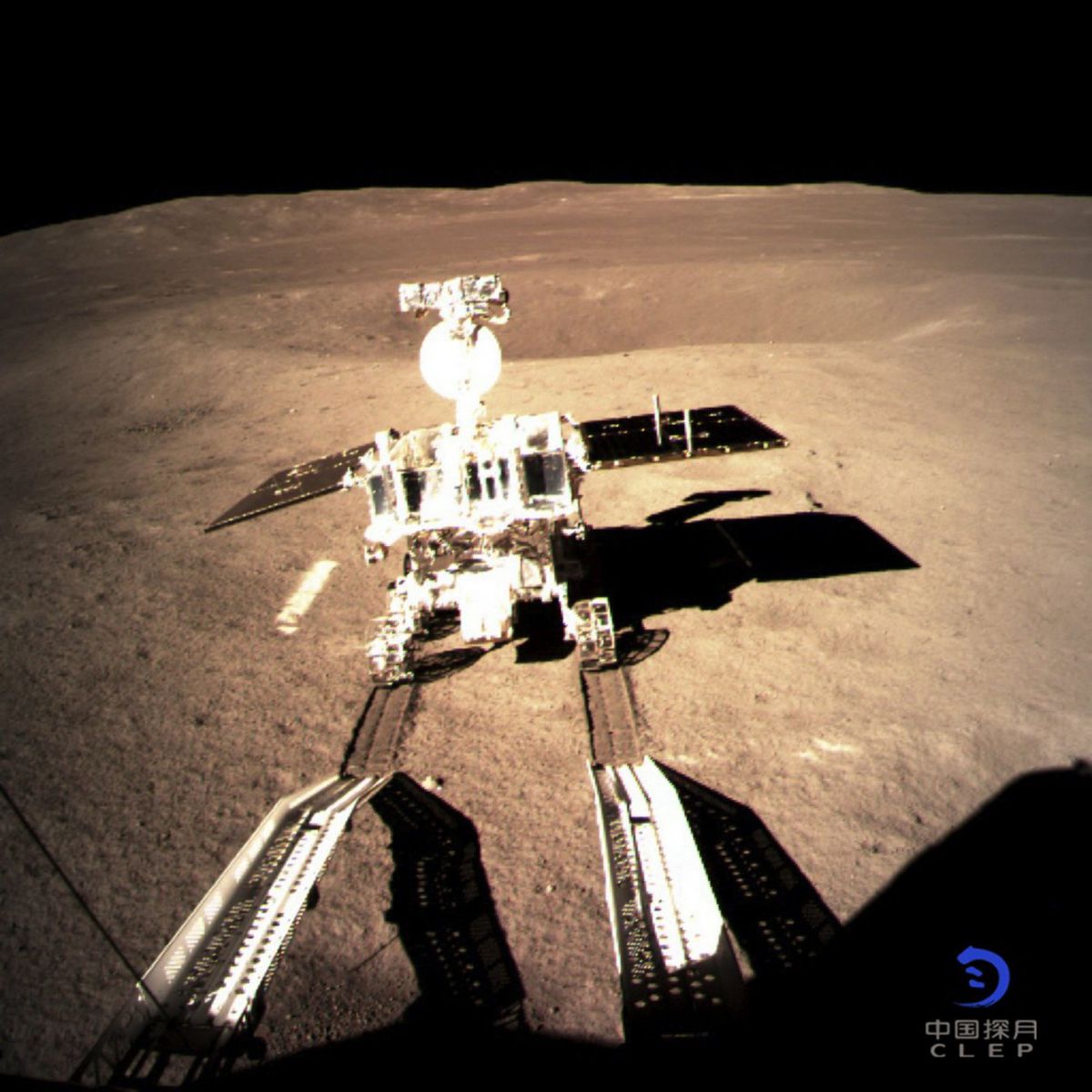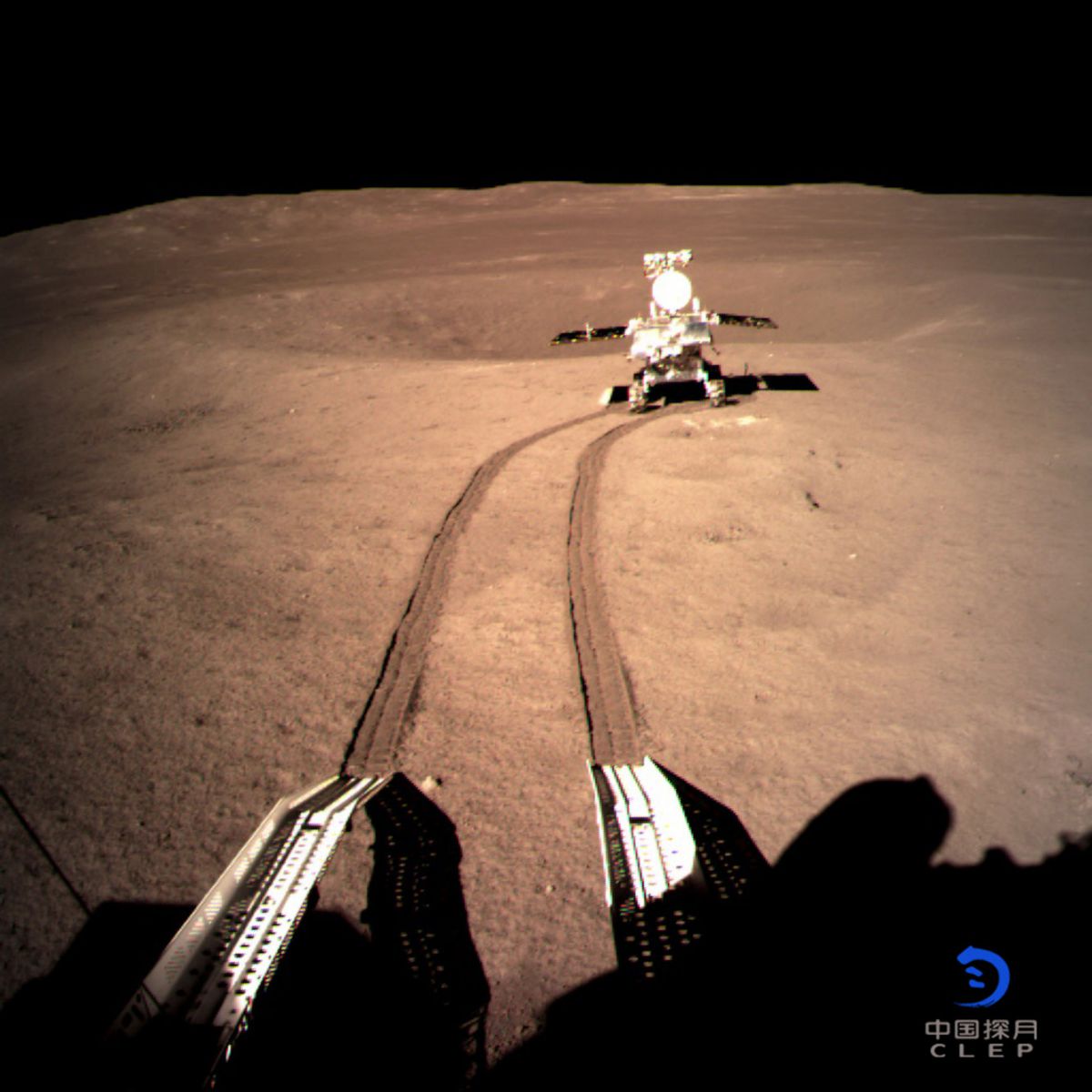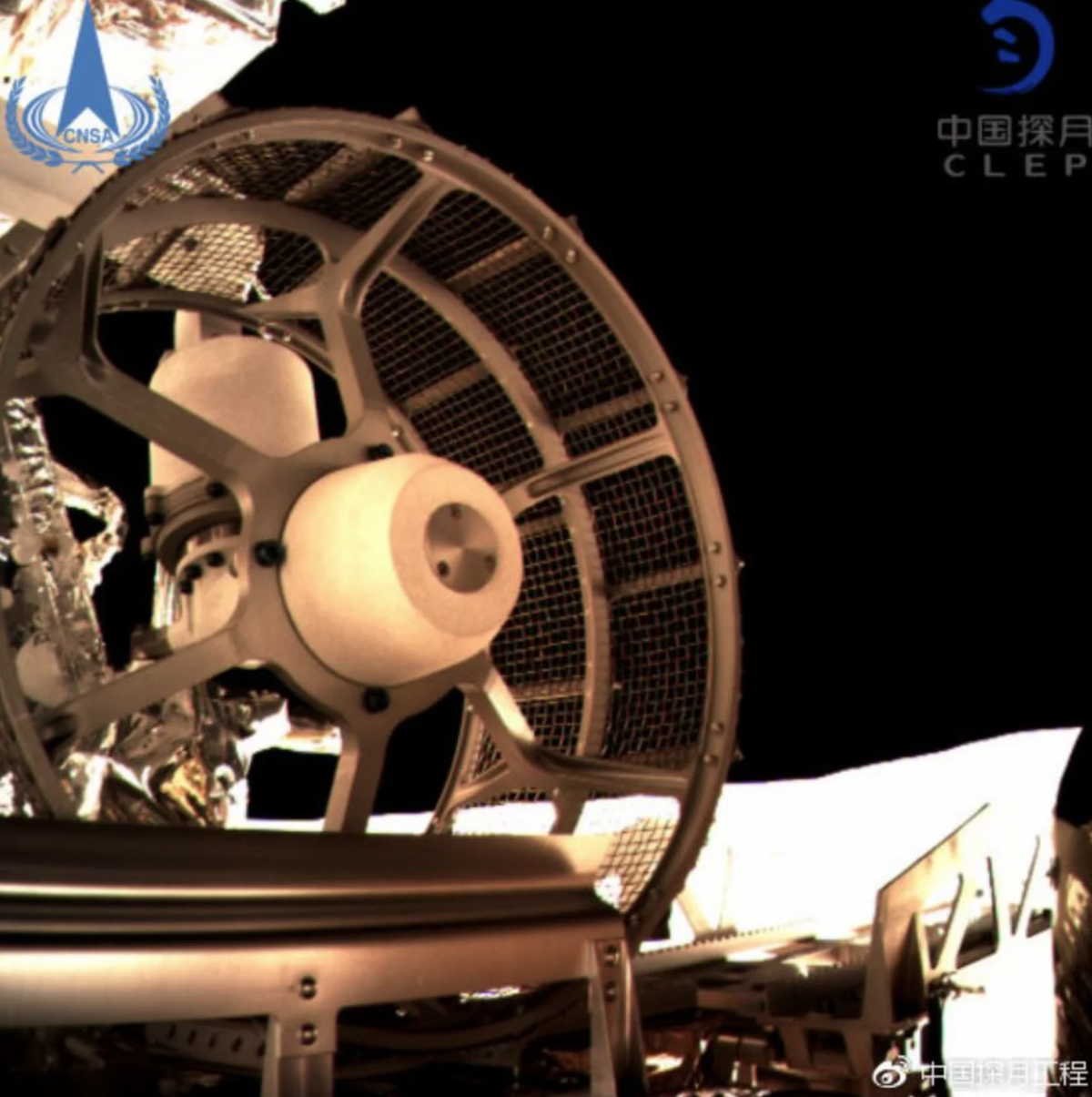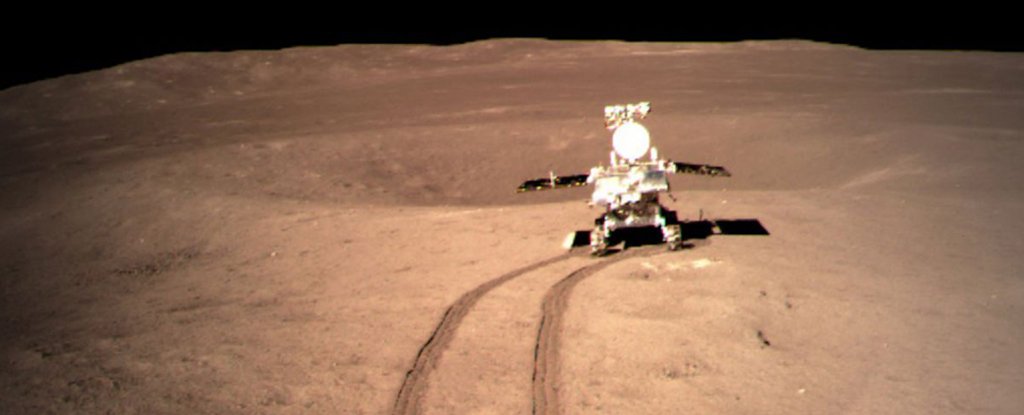ΣΧΟΛΙΟ ΙΣΤΟΛΟΓΙΟΥ : Είναι που ήταν απάτη η ψέμματα η προσελήνωση των Κινέζων όταν κάναμε την δημοσίευση εδώ όπως μας έγραψε μια σχολιάστρια.Οι φωτογραφίες από το επιστημονικό σάιτ αποδεικνύουν το αντίθετο. Το θέμα δεν είναι ότι πήγαν... πήγαν και αυτοί αλλά και οι Ρώσσοι πριν απο αυτούς....αλλά αν θα τους επιτραπεί να κάτσουν.!! Διότι οι Κινέζοι δεν θέλουν μόνο να λένε ότι πήγαν εκεί...θέλουν και μόνιμο διαστημικό σταθμό/βάση στην Σελήνη.
Earlier this week, Chinese lunar probe Chang'e-4 made history by becoming the first spacecraft to ever land on the far side of the Moon - the less-studied, mountainous half that faces away from the Earth.
Yesterday, we were blessed with a number of new high-resolution images, courtesy of China's National Space Administration, showing the more mysterious side of the Moon in all its glory.
The pictures had to make their way through a special relay satellite called Queqiao since radio communication with the far side of the Moon is far more difficult.
Chang'e-4 launched on December 7 to explore the differences between the far, and near side of the Moon in terms of their mineral composition, and structure. It's also carrying a tiny biosphere containing a number of Earth-based species including potato plants and fruit flies.
 (CSNA)
(CSNA)
The pictures, taken by Chang'e-4's on-board cameras, show the Yutu 2 rover - China revealed that name yesterday - rolling down tracks and leaving the Chang'e-4 lander behind.
The rover is situated in the floor of the 115 mile wide (186 kilometers) Von Kármán Crater near the Moon's South Pole.
 (CSNA)
(CSNA)
Yutu 2 is the successor of the original Yutu rover that landed on the near side of the Moon back in December 2013 as part of the Chang'e-3 mission. Since the Chang'e-4 and accompanying rover were meant to be backups for their predecessors, the designs are strikingly similar.
 (CSNA)
(CSNA)
The image above shows Yutu 2's specialized wheels, designed to survive the treacherous, yet low-gravity conditions on the Moon's surface.
The term "Dark Side of the Moon" is a misnomer - the far side of the Moon receives quite a bit of light, just as much as its near side.
As Space.com points out,
the lunar day cycle lasts a much longer 709 hours - roughly 30 days on
Earth. That means it will be light for half of that time, roughly two
weeks.
In fact, Chang'e-4 landed shortly after the sun rose on the far side, meaning it has roughly 14 Earth days of daylight ahead of it.
And we can't wait to find out what the lander - and Yutu 2 - have in store for us.
This article was originally published by Futurism. Read the original article.
ΠΗΓΗ
Earlier this week, Chinese lunar probe Chang'e-4 made history by becoming the first spacecraft to ever land on the far side of the Moon - the less-studied, mountainous half that faces away from the Earth.
Yesterday, we were blessed with a number of new high-resolution images, courtesy of China's National Space Administration, showing the more mysterious side of the Moon in all its glory.
The pictures had to make their way through a special relay satellite called Queqiao since radio communication with the far side of the Moon is far more difficult.
Chang'e-4 launched on December 7 to explore the differences between the far, and near side of the Moon in terms of their mineral composition, and structure. It's also carrying a tiny biosphere containing a number of Earth-based species including potato plants and fruit flies.
 (CSNA)
(CSNA)The pictures, taken by Chang'e-4's on-board cameras, show the Yutu 2 rover - China revealed that name yesterday - rolling down tracks and leaving the Chang'e-4 lander behind.
The rover is situated in the floor of the 115 mile wide (186 kilometers) Von Kármán Crater near the Moon's South Pole.
 (CSNA)
(CSNA)Yutu 2 is the successor of the original Yutu rover that landed on the near side of the Moon back in December 2013 as part of the Chang'e-3 mission. Since the Chang'e-4 and accompanying rover were meant to be backups for their predecessors, the designs are strikingly similar.
 (CSNA)
(CSNA)The image above shows Yutu 2's specialized wheels, designed to survive the treacherous, yet low-gravity conditions on the Moon's surface.
The term "Dark Side of the Moon" is a misnomer - the far side of the Moon receives quite a bit of light, just as much as its near side.
In fact, Chang'e-4 landed shortly after the sun rose on the far side, meaning it has roughly 14 Earth days of daylight ahead of it.
And we can't wait to find out what the lander - and Yutu 2 - have in store for us.
This article was originally published by Futurism. Read the original article.
ΠΗΓΗ

3 σχόλια:
Ιεροσυλίες!!! Ειδήσεις που σε κάνουν έξαλλο (η):
1/ Μετά το τσίρκο – θέατρο παράσταση για λαθροορκ του καλοκαιριού έχουμε συνέχεια: Βρετανός στήνει 29 ανθρωπόμορφα γλυπτά σε φυσικό μέγεθος πάνω στο νησί της Δήλου- Δείτε εντυπωσιακές φωτογραφίες (κάτι καλλικατζάρια ως επί το πλείστον μαύρα, μάλλον σαν την ψυχή του “καλλιτέχνη”). Ο αναγνωρισμένος (από ποιους;) Βρετανός καλλιτέχνης Antony Gormley και οι ανθρωπόμορφες γλυπτικές εγκαταστάσεις του θα «επαναποικίσουν»(γιατί;) το νησί της Δήλου μετά από χιλιάδες χρόνια. (pronews)
2/ Αυτή η αμερικανόφερτη βλακεία να ονομάζεις τα βαρομετρικά με ονόματα με εκνευρίζει. Όμως τα τελευταία βαφτίσια ξεπέρασαν τα όρια… Ονόμασαν “Υπατία” την τελευταία καταιγίδα! Ποια; αυτή που ήταν σκέτο φως και την σκότωσαν με φρικτό τρόπο. Σήμερα ξανα-ασελγούν στην μνήμη της…
Α.Α.
ΥΓ. Όσο για τους κινέζους μπορεί να πήγανε, απλά από ένστικτο (προσωπικά) νομίζω πως μπορεί και όχι. Δεν αμφισβητώ τα επιστημονικά σάιτ, απλά μερικά από αυτά υποστηρίζουν ότι πήγαν και οι αμερικάνοι ...
Ίσως κάποτε μάθουμε και την αλήθεια....
κανενας δεν μπορει να βγει απο την ατμοσφαιρα της γης διοτι θα γινει καρβουνο,και με τα τενεκαδακια των γηινων τεχνολογιων ειναι γελειο να λεμε τετοια πραγματα,ποτε κανεις δεν πηγε στην σεληνη και ουτε προκειται με τα μεσα που αφηνουν να νομιζουμε οτι εχουν,εκτος και αν χρησιμοποιουν αλλα κολπα...
https://www.youtube.com/watch?v=HrFqjMJCrrE&list=PLnXXTzMPT2GOO-Uz1bFjqixuOXPkrf48F&index=12&t=0s&app=desktop.
Nα δούμε και τι μας έλεγε κάποιος πιο παλιά....
Δημοσίευση σχολίου